|
|
Volume 10, Issue 2, October 2023
Let’s Celebrate Farm to School Month!
|
|

Join USDA as we celebrate National Farm to School Month this October! Designated by Congress in 2010, National Farm to School Month encourages schools, farmers and farm groups, local businesses, nonprofit institutions, churches, cities, State governments, and other local groups to raise awareness of the many benefits of farm to school, ranging from new market access for small and mid-sized agricultural producers to healthier meals in school and early childcare settings, and the many efforts in communities around the country.
Farm to School Month also highlights the incredible growth farm to school experienced in the past few years. Results from the 2019 Farm to School Census indicate that nearly two-thirds (65%) of School Food Authorities (SFAs) participated in farm to school activities in SY 2018-2019, with over half of participating SFAs initiating F2S efforts in the past three years. Additionally, 76.7% of SFAs served local food in their Child Nutrition Program meals, with over $1.2 billion spent on local foods nationally in the 2018-2019 school year. Of every dollar spent on food by SFAs, 20 cents went to buying local food! USDA is excited to celebrate these achievements and looks forward to seeing farm to school continue to grow.
|
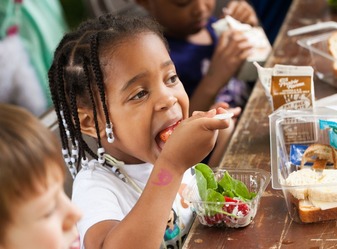
In acknowledgement of farm to school’s many benefits, USDA has invested an estimated $300 million in new funding to farm to school through Farm to School State Agency Formula Grants, Local Food for Schools Cooperative Agreement Program, and the Healthy Meal Incentives Initiative, as part of USDA’s efforts to transform America’s food system. Bolstered by these programs and the active participation of SFAs, farm to school programs have played a vital role in promoting supply chain resiliency and in providing students with increased access to healthier, local meals.
To celebrate Farm to School Month, Stacy Dean, the Deputy Undersecretary of Food and Nutrition Service, along with officials from the Montana Office of Public Instruction, visited Monforton School, a partner in a Fiscal Year (FY) 2017 Patrick Leahy Farm to School Grant Program (Farm to School Grant Program) project with Gallatin Valley Farm to School, in Bozeman, Montana, to promote the importance of locally grown food in school meals. They took part in a tour of Livingston Public School’s East Side Elementary school, a FY 2014 Patrick Leahy Farm to School Program grantee and a recent Healthy Meals Incentives Grant for Small and/or Rural School Food Authorities recipient, attended a farm to school class with fourth graders, and ate lunch with third graders. During this visit, Stacy Dean stated, “USDA’s school meal programs provide critical nutrition to more than 30 million children every school day, helping them succeed inside the classroom and beyond. Through farm to school, the Healthy Meals Incentive Initiative, and other investments, USDA is doing everything we can to ensure schools have the resources and support they need to keep serving kids across America the healthy meals they need to thrive.”
The Deputy Under Secretary also shared her thoughts and reflections on farm to school on National Public Radio (NPR). The 4-minute NPR segment and article, “Can cooking and gardening at school inspire better nutrition? Ask these kids”, highlight the benefits of including farm to school activities and nutrition education in the school day.
|
USDA is celebrating Farm to School Month by launching the USDA Farm to School Census and the annual Patrick Leahy Farm to School Grant Request for Applications (RFA).
Are you celebrating Farm to School month?
Farm to school works because of you! Let us know how you celebrate by tagging your social media posts using these hashtags:
#localcounts #USDA #F2SMonth #Farmtoschool.
Patrick Leahy Farm to School Grant Program Request for Applications
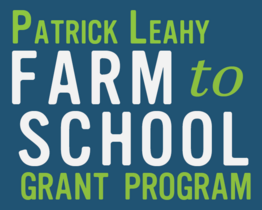
On October 11, the USDA Patrick Leahy Farm to School Grant Program (Farm to School Grant Program) announced the opening of the fiscal year (FY) Farm to School Grant Program Request for Application (RFA). USDA expects to award approximately $12 million in grant awards for activities such as training, supporting operations, planning, purchasing equipment, developing school gardens, and implementing farm to school programs. Since FY 2013, USDA has awarded over $84 million through the Farm to School Grant Program, funding more than 1,100 projects across all 50 states, the District of Columbia, the U.S. Virgin Islands, Guam, and Puerto Rico, reaching over 28 million students in nearly 63,000 schools. Eligible applicants may include schools and other institutions that operate child nutrition programs, tribal organizations, agricultural producers or groups of agricultural producers, nonprofit entities, and state and local government agencies.
The grant program takes a comprehensive approach to advancing equity for all in farm to school programming by prioritizing applications serving at least 40 percent of students who are eligible for free or reduced-price meals; applications from Indian Tribal Organizations (ITOs) serving tribal communities; applications from organizations led by and serving Black, Indigenous or other communities of color; applications based in and serving rural communities; and applications from agricultural producers or groups of agricultural producers.
If you or an organization you know wants to apply, please visit our Resources for Farm to School Grant Program Applicants webpage for more information. Complete applications must be submitted to Grants.gov by 11:59 pm ET on Friday, January 12, 2024.
|
USDA Farm to School Census
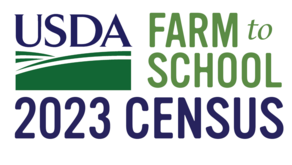
October also marks the kickoff of the USDA Farm to School Census (Census). The Census is conducted periodically to assess the state of farm to school activities across the U.S. The Census surveys all school food authorities (SFAs) participating in the National School Lunch Program and is the only national survey that examines local food purchasing, school gardens, and agricultural education efforts in schools. USDA conducted the first Census in 2013 and conducted two more in 2015 and 2019. The last time USDA conducted the Census, in 2019, approximately two-thirds of school food authorities (SFAs) responded, including respondents from all 50 states, American Samoa, Guam, Puerto Rico, US Virgin Islands, and the District of Columbia. We learned that farm to school is the norm, it continues to grow, and it is having an impact.
We need your help to make the 2023 Census a success! For the first time, Census surveys will be “sharable.” SFAs can leverage the help of their partners in gathering accurate data on their district or schools’ farm to school activities. USDA encourages SFAs to collaborate with partners they engage with in school gardens, farm field trips, curriculum development, and more to share their comprehensive farm to school story through the Census. You can help USDA build the most accurate picture possible of the state of farm to school by spreading the world to complete the Census. See our 2023 Farm to School Census Resources page for easy-to-use resources.
|
|
|
|
USDA Expands Access to School Breakfast and Lunch for More Students

The USDA recently announced that it is giving an estimated 3,000 more school districts in high-need areas the option to serve breakfast and lunch to all students at no cost, by expanding the availability of the Community Eligibility Provision (CEP). CEP is a simplified meal service option that allows schools to provide meals at no cost to all students without requiring families to apply for free and reduced-price meals. Before the Final Rule: Child Nutrition Programs- CEP Increasing Options for Schools was published, at least 40% of students had to live in households participating in specific income-based federal assistance programs for a school, group of schools, or school district to be eligible for CEP. The new final rule lowers that threshold from 40% to 25%. Secretary Tom Vilsack stated, “Increasing access to free, healthy school breakfast and lunch will decrease childhood hunger, improve child health and student readiness, and put our nation on the path to better nutrition and wellness.”
|
MyPlate is now on Instagram!

Long gone are the days of the food pyramid. Meet MyPlate, USDA’s official symbol for healthy eating, which offers tips and resources that support healthy dietary patterns. MyPlate has recently made a debut on Instagram! Be one of the first to follow @MyPlate_gov. Each week, you will find recipes, tips for healthy eating, and more with themes like #MyPlateMondays, #RecipeThursdays, and #BudgetFriendlyFridays. Make sure to hit that follow button!
|
Healthy Meals Incentives Recognition Awards

As part of a cooperative agreement to develop and implement the USDA Food and Nutrition Service’s Healthy Meals Incentives Initiative, Action for Healthy Kids is offering Recognition Awards to celebrate school food authorities (SFA) that have made significant improvements to the nutritional quality of their school meals. There are various award categories including, Breakfast Trailblazer, Small and/or Rural Lunch Trailblazer, and Innovation in the Cultural Diversity of School Meals. SFAs meeting the Recognition Award criteria will receive national and local recognition, an awardee toolkit, and travel stipends to attend a national Healthy Meals Summit. The application is currently open and will close on June 30, 2025.
|
Celebrating the First Anniversary of the Historic White House Conference
By Caree Cotwright, PhD, RDN, Director of Nutrition Security and Health Equity
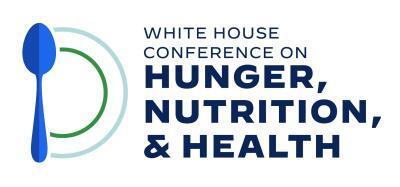
On September 28th, we celebrated the first anniversary of the historic White House Conference on Hunger, Nutrition, and Health. As described by Deputy Under Secretary for Food, Nutrition, and Consumer Services Stacy Dean, we published a report the day after the Conference last fall explaining how we aimed to leverage the momentum of the Conference and implement the corresponding National Strategy. In a fact sheet released on the first anniversary we highlighted some examples of the progress we are making. One example is how we are providing extensive assistance to school to continue and expand service of nutritious and appealing meals, including $1.2 billion in Supply Chain Assistance funds and an additional $30 million in grant funds to help school districts across the country purchase equipment needed to prepare and serve nutritious meals that meet USDA’s nutrition requirements and make it easier for schools to prepare fresh foods. Another example is how we are working closely with our State and Tribal partners to stand up a new Summer Electronic Benefits Transfer Program that provides summer grocery benefits to families whose children are eligible for free or reduced-price school meals. We estimate that when fully implemented, the program could serve more than 29 million children and provide more than $3.5 billion in benefits each year. And we are not done yet! With your help, we hope to continue carving a path toward a future where all children and families are nourished, thriving, and ready to shape the world.
|
|
|

The People’s Garden Webinar

This Thursday, October 26, at 3:30 pm ET, join USDA’s People’s Garden for the next installment of their webinar series which celebrates back to school time. This month will highlight USDA’s Food and Nutrition Service’s available resources to support child nutrition, and the vital role community and school gardens can play in making healthy food accessible for all children.
|
National Farm to School Network 2023 Movement Meeting
|
This Thursday, October 26, from 3:00-5:00 pm ET, the National Farm to School Network will hold their 2023 Movement Meeting. This annual event serves as a space for advocates and members in the Farm to School and Farm to Early Care Education communities to connect, reflect, and celebrate during National Farm to School Month.
|
|
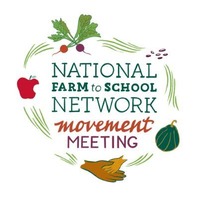 |
The Association of State Public Health Nutritionists Farm to Early Care and Education Webinar Series
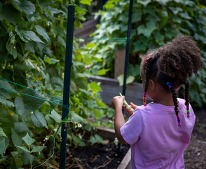 |
|
The Association of State Public Health Nutritionists (ASPHN) will host a new Farm to Early Care and Education (ECE) webinar series starting October 31, 2023. Each webinar will be held on the 2nd Tuesday of each month. The series will review topics, innovations, and ideas in Farm to ECE to help grow your program. |
Local & Regional Food Systems Resilience Playbook
The new Local and Regional Food Systems (LRFS) Resilience Playbook is a collaborative effort between university-based researchers, local and regional food system leaders, and USDA Agricultural Marketing Service (AMS) to support food systems leaders seeking to broaden their understanding of the strengths and vulnerabilities of LRFS in times of disruption. This part-LRFS primer and part-inspirational guide shares big-picture frameworks and real-world examples to help readers envision what resilience looks like in action.

FoodCorps Lesson Plans
As we celebrate Farm to School month, think about using one of FoodCorps interactive and educational lesson plans for your activities! FoodCorps has created hands-on experiential activities to engage kids in learning and developing skills in gardening, cooking, and preparing healthy foods. The 96 lesson plans are organized by grade, season, and theme. There are many exciting themes, including the Connecting Food, Culture, and Community, Exploring the Ecology of Food, and Growing and Accessing Healthy Food.
|
Strengthening Equity & Inclusion in Garden Education

The School Garden Support Organization Network has compiled resources that can help farm to school programs intertwine equity, inclusion, diversity, and justice into all aspects of their garden programming. Within the resource compilation, you can find resources on specific topic areas, such as Embedding Equity and Inclusion into Organizational Leadership and Strengthening Diversity Through an Equitable and Inclusive Organizational Culture and Structure.
|
|
|

Community Food Projects Competitive Grant Program

USDA National Institute of Food and Agriculture (NIFA) has opened the Request for Applications for the FY 2024 Community Food Projects Competitive Grant Program (CFPCGP). The grant program is intended to bring together stakeholders from distinct parts of the food system to foster an understanding of national food security trends and how they might improve local food systems. CFPCGP solicits applications to fund three grant types: 1) Training and Technical Assistance, 2) Planning Projects, and 3) Community Food Projects. The RFA and more information about the grant tracks are available here.
|
USDA Expands Healthy Food Financing Initiative to Local and Regional Partnerships
USDA Rural Development is expanding the Healthy Food Financing Initiative program to include public-private partnerships. USDA and Reinvestment Fund are inviting applications for the Local and Regional Healthy Food Financing (HFFI) Partnerships Program from August 1 to November 3, 2023. Eligible applicants include new or existing regional, state, or local public-private partnerships working to improve access to fresh, healthy food in underserved communities through technical and financial assistance to food retailers and enterprises.
USDA Farm Labor Stabilization and Protection Pilot Program
USDA Farm Labor Stabilization and Protection Pilot Program (FSLP) will award up to $65 million in American Rescue Plan Act funding to improve food and agricultural supply chain resiliency by addressing challenges agricultural employers face with labor shortages and instability. Specific goals include: addressing workforce needs in agriculture, promoting safe and healthy working conditions for farmworkers, and supporting the expansion of lawful migration pathways for workers. Applications for the FLSP program must be received on or before 11:59 pm ET on November 28, 2023, through Grants.gov.
Farmers’ Market Nutrition Program e-Solution Grant
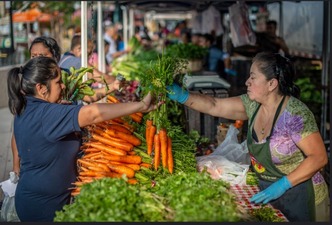
The American Rescue Plan Act provided the USDA with $390 million, available through FY 2024, to carry out outreach, innovation, and program modernization efforts to increase participation and redemption of benefits for both the Special Supplemental Nutrition Program for Women, Infants, and Children (WIC) and the WIC Farmers’ Market Nutrition Program (FMNP). The FY2023-24 FMNP e-Solution Grant is open for interested State agencies, Indian Tribal Organizations and territories, or multi-state agency collaborations. The primary goals of these funded projects must be to: (1) modernize benefit delivery for FMNP state agencies, participants, farmers, and farmers’ markets; and (2) increase benefit utilization at farmers and farmers’ markets. Modernizing benefit delivery in FMNP will help WIC families keep using benefits to purchase fresh and locally grown fruits and vegetables and will help farmers participate in WIC using similar payment technology with other customers. Applications are due by January 23, 2024.
|
Good Food Funding Guide
New Venture Advisors, LLC, a group of business consultants specializing in food system planning and sustainable food business development, created the Good Food Funding Guide that compiles sources of grants, loans, and equity for businesses and programs looking to promote sustainable food and agriculture and local economies. The guide contains information on funding sources categorized by focus areas, funding ranges, and application timelines.
|
|
|
USDA is an equal opportunity provider and employer. To file a complaint of discrimination, write: USDA, Office of the Assistant Secretary for Civil Rights, Office of Adjudication, 1400 Independence Ave., SW, Washington, DC 20250-9410 or call (866) 632-9992 (Toll-free Customer Service), (800) 877-8339 (Local or Federal relay), (866) 377-8642 (Relay voice users).
|
|
|
|
|